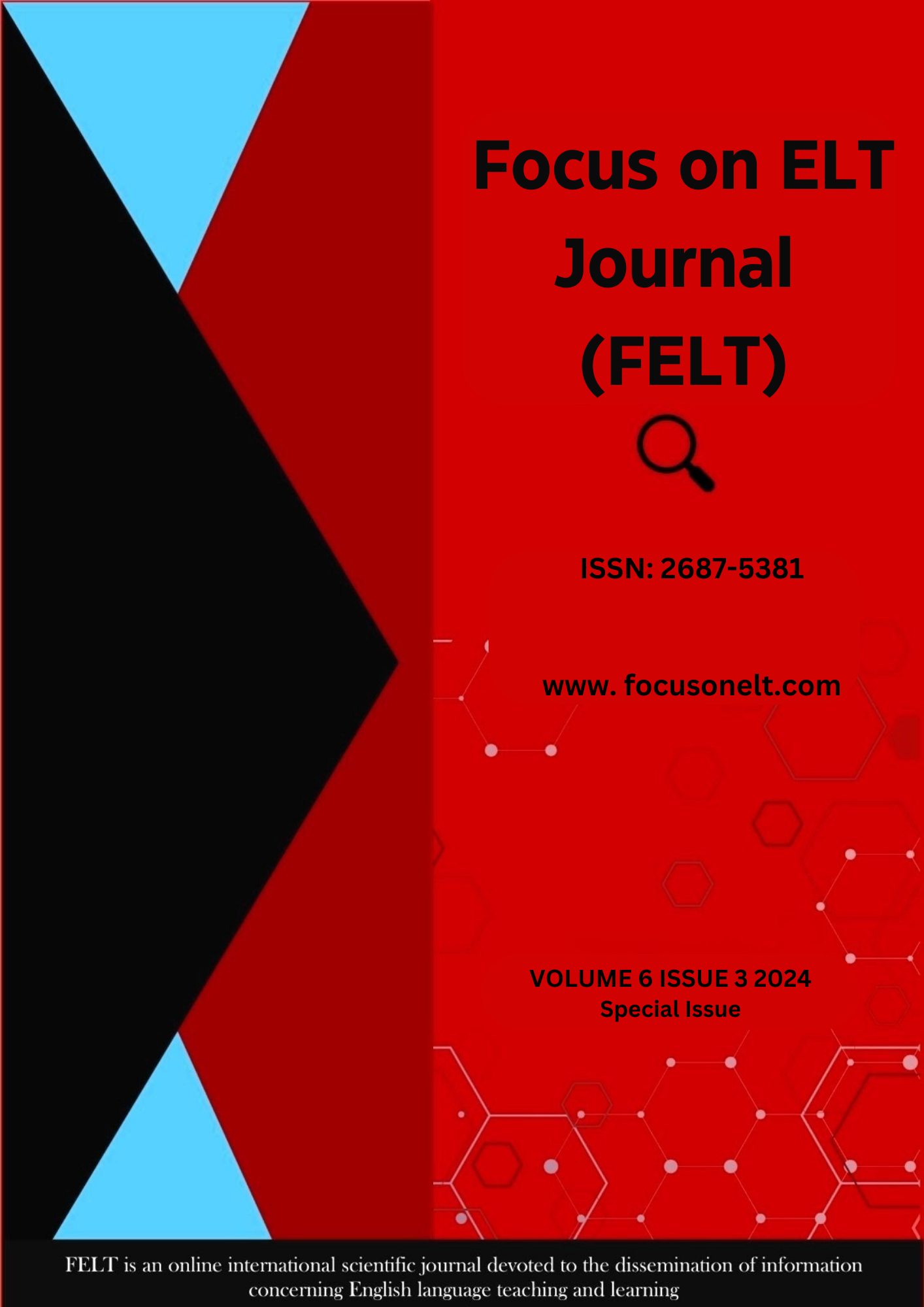Language, culture, connection: The medium of instruction and intercultural communicative competence
Main Article Content
Abstract
English medium instruction (EMI) is becoming widespread day by day, especially among non-native English speakers. Moreover, Partial English Medium Instruction (PEMI) is gaining popularity due to some factors. Thus, investigating the intercultural structures of these programs is crucial. In this respect, this study, which is a quantitative one, seeks answers to uncover the relationship between tertiary-level students’ intercultural communication skills and the type of medium of instruction they get. In addition, the relationship between learners’ self-perceived language proficiency levels and their Intercultural Communicative Competence (ICC) is examined. Moreover, this study investigates the relationship between students’ language learning mindsets and intercultural communication skills. The findings of the study reveal that there are significant relationships between ICCs and type of instruction. Students in EMI programs develop higher levels of attitudes, intercultural communication, and cognitive skills. In addition, Turkish Medium Instruction (TMI) students obtain higher levels of entity mindsets, which might influence their enrollment preferences.
Metrics
Article Details

This work is licensed under a Creative Commons Attribution-NonCommercial-NoDerivatives 4.0 International License.
References
Aguilar, M., & Rodríguez, R. (2012) “Lecturer and Student Perceptions on CLIL at a Spanish University.” International Journal of Bilingual Education and Bilingualism 15(2), 183–97. doi:10.1080/13670050.2011.615906
Aguilar-Pérez, M. (2018). Integrating intercultural competence in ESP and EMI: From theory to practice. ESP Today Journal of English for Specific Purpose at Tertiary Level, 6(1), 25-43. https://doi.org/10.18485/esptoday.2018.6.1.2
Aguilar-Pérez, M. (2021). EMI lecturers’ and students’ perceptions: Can EMI contribute to enhancing intercultural competence? Teaching Language and Content in Multicultural and Multilingual Classrooms: CLIL and EMI Approaches, 65-96. https://doi.org/10.1007/978-3-030-56615-9_4
Arasaratnam, L. A., & Doerfel, M. L. (2005). Intercultural communication competence: Identifying key components from multicultural perspectives. International Journal of Intercultural Relations, 29(2), 137-163. https://doi.org/10.1016/j.ijintrel.2004.04.001
Arno-Macià, E., & Aguilar-Pérez, M., (2019). Developing Language and Intercultural Skills through an IaH Programme at University. Studia Universitatis Babes-Bolyai, Philologia, 64(2).
Botha, W. (2013). English-medium Instruction in China's Universities: External Perceptions, Ideologies and Sociolinguistic Realities (Doctoral thesis, University of South Africa). https://core.ac.uk/download/pdf/43174186.pdf
Bradford, A. (2016). Toward a typology of implementation challenges facing English-Medium Instruction in higher education: Evidence from Japan. Journal of Studies in International Education, 20, 339–356. https://doi.org/10.1177/1028315316647
Branigan, S. (2022). Intercultural Communicative Competence: Obstacles Faced by NESTs, NNESTs and Learners. Academic Journal of Modern Philology, (18), 23-36.
Byram, M. (2014). Twenty-five years on–from cultural studies to intercultural citizenship. Language, culture and curriculum, 27(3), 209-225. https://doi.org/10.1080/07908318.2014.974329
Byram, M., & Dervin, F. (2008). Student, staff and academic mobility in higher education. Newcastle: Cambridge Scholars Publishing. https://core.ac.uk/download/pdf/11040421.pdf
Byram, M., Gribkova, B., & Starkey, H. (2002). Developing the intercultural dimension in language teaching: A practical introduction for teachers. Language Policy Division, Directorate of School, Out-of-School and Higher Education, Council of Europe.
Cots, J. M., Aguilar, M., Mas-Alcolea, S., & Llanes, À. (2016). Studying the impact of academic mobility on intercultural competence: a mixed-methods perspective. The Language Learning Journal, 44(3), 304-322. https://doi.org/10.1080/09571736.2016.1198097
Dearden, J. (2014). English as a medium of instruction-a growing global phenomenon. British Council.
Deardorff, D. K. (2009). Implementing intercultural competence assessment. The SAGE handbook of intercultural competence, (s 2), 52.
Fantini, A. E., & Tirmizi, A. (2006). Exploring and assessing intercultural competence: Final report. Federation EIL.
Fleischmann, C., Folter, L. C., & Aritz, J. (2020). The impact of perceived foreign language proficiency on hybrid team culture. International Journal of Business Communication, 57(4), 497-516. https://doi.org/10.1177/232948841771044
Hu, G., & Lei, J. (2014). English-medium instruction in Chinese higher education: A case study. Higher Education, 67, 551-567. https://doi.org/10.1007/s10734-013-9661-5
Kinginger, C. (2103). Social and cultural aspects of language learning in study abroad. Amsterdam: John Benjamins.
Knight, J. (2008). Higher education in turmoil: The changing world of internationalization. Rotterdam: Sense Publishers.
Larsen-Freeman, D. (2000). Techniques and principles in language teaching. Oxford University.
Leask, B. (2015). Internationalizing the curriculum. London: Routledge.
Lou, N. M. and Noels, K. A. (2017), Measuring language mindsets and modeling their relations with goal orientations and emotional and behavioral responses in failure situations. The Modern Language Journal, 101: 214–243. doi:10.1111/modl.12380
Macaro, E., & Han, S. (2020). English medium instruction in China’s higher education: Teachers’ perspectives of competencies, certification and professional development. Journal of Multilingual and Multicultural Development, 41(3), 219–231. https://doi.org/10.1080/01434632.2019.1611838
Messelink, H. E., Van Maele, J., & Spencer-Oatey, H. (2015). Intercultural competencies: What students in study and placement mobility should be learning. Intercultural Education, 26(1), 62-72. https://doi.org/10.1080/14675986.2015.993555
Papatsiba, V. (2006). Study abroad and experiences of cultural distance and proximity: French Erasmus students. Living and studying abroad, 108–133. Bristol: Multilingual Matters.
Portalla, T., & Chen, G. (2010). The development and validation of the intercultural effectiveness scale. Intercultural Communication Studies, 19(3), 21–37.
Pulcini, V. & S. Campagna (2015). Internationalisation and the EMI controversy in Italian higher education, In S. Dimova, A. K. Hultgren & C. Jensen (eds.), English-medium instruction in European higher education. Boston/Berlin: De Gruyter Mouton, 65–87.
Richards, J. C., & Pun, J. (2023). A typology of English-medium instruction. RELC Journal, 54(1), 216-240. https://doi.org/10.1177/0033688220968584
Saarinen, T., & Nikula, T. (2013). Implicit policy, invisible language: Policies and practices of international degree programmes in Finnish higher education. English-medium instruction at universities: Global challenges, 149, 131-150. https://doi.org/10.21832/9781847698162-011
Sawir, E. (2011). Academic staff response to international students and internationalising the curriculum: The impact of disciplinary differences. International Journal for Academic Development, 16, 45-57. https://doi.org/10.1080/1360144X.2011.546224
Spitzberg, B. H., & Chagnon, G. (2009). Conceptualizing intercultural communication competence. The SAGE handbook of intercultural competence, 2–52. Thousand Oaks, CA: Sage.

